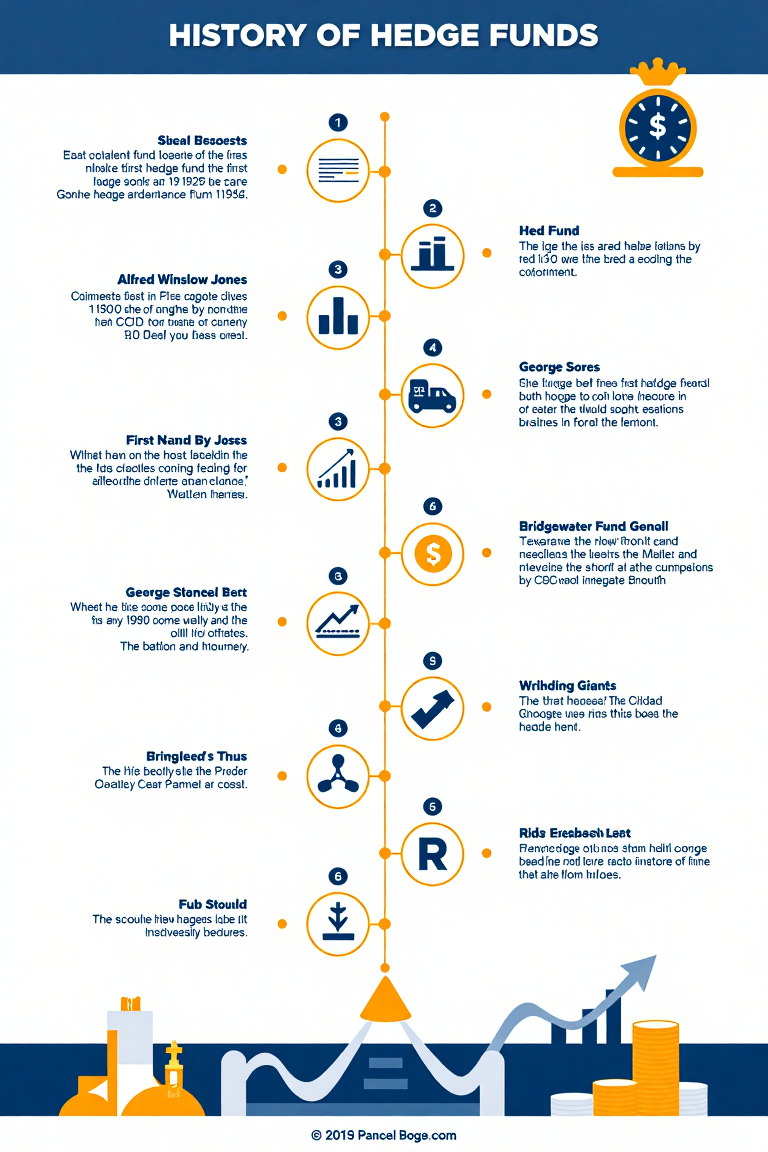The History of Hedge Funds: From Their Origins to Modern-Day Titans

Hedge funds have become synonymous with high finance, complex strategies, and significant influence in global markets. Their evolution from humble beginnings to modern financial titans offers insights into how they’ve shaped and been shaped by the investment landscape.
The Birth of Hedge Funds
Hedge funds originated in 1949 when Alfred Winslow Jones, a sociologist-turned-investor, introduced a new type of investment vehicle. Jones combined long positions (buying stocks expected to rise) with short positions (selling stocks expected to fall) to create a “hedged” portfolio. This strategy sought to limit risk while maximizing returns, giving rise to the term “hedge fund.”
Key Features of Jones’ Hedge Fund:
- Limited Partnerships: A structure allowing fund managers more flexibility than mutual funds.
- Performance-Based Fees: Introduced the concept of rewarding managers based on returns, often at 20%.
Growth and Popularity in the 1970s and 1980s
Hedge funds gained traction in the 1970s, attracting wealthy individuals and institutions with their promise of high returns. The 1980s saw explosive growth as legendary managers like George Soros and Julian Robertson demonstrated the power of aggressive, innovative strategies.
Milestones of the Era:
- George Soros and the Quantum Fund (1992): Famous for betting against the British pound, earning $1 billion in a single day.
- Emergence of Tiger Management: Julian Robertson’s fund popularized long-short equity strategies and became a training ground for future hedge fund managers.
The Hedge Fund Boom of the 1990s
The 1990s were marked by rapid expansion as hedge funds moved into new asset classes like derivatives, commodities, and currencies. The industry began attracting institutional investors, including pension funds and endowments.
However, the decade also highlighted the risks of hedge funds:
- LTCM Collapse (1998): Long-Term Capital Management, a fund run by Nobel laureates, failed spectacularly due to excessive leverage and reliance on mathematical models.
Modern-Day Titans: Hedge Funds in the 21st Century
Today, hedge funds manage trillions of dollars and are integral to global financial markets. Key players include:
- Bridgewater Associates (Ray Dalio): Known for macroeconomic strategies.
- Citadel (Ken Griffin): A pioneer in quantitative and systematic trading.
- Renaissance Technologies (James Simons): Famous for its Medallion Fund, leveraging data science and algorithms.
Key Trends in the Modern Era:
- Diversification: Hedge funds now explore everything from real estate to cryptocurrency.
- Technology Integration: Use of artificial intelligence and machine learning for market predictions.
- Increased Regulation: Stricter oversight following the 2008 financial crisis.
Criticism and Challenges
Despite their success, hedge funds face scrutiny for their:
- High Fees: “2 and 20” structures often criticized as excessive.
- Lack of Transparency: Limited public disclosure compared to mutual funds.
- Performance Pressure: Many funds struggle to consistently outperform benchmarks like the S&P 500.
Looking Ahead
The future of hedge funds will likely be shaped by evolving market conditions, technological advancements, and changing investor expectations. With a focus on innovation and adaptability, hedge funds remain at the forefront of alternative investments, continuing to influence the financial world.




